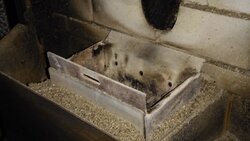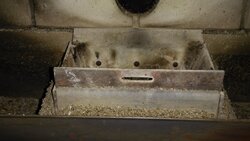Bob P.
New Member
Wish I would have found that blower (and I thought I looked pretty hard).... I actually thought that was a part that nobody carried anymore. Spent about 3 hours making that adapter. used a 5 x 5 plate steel and a piece of 3" exhaust pipe. cut a square hole, welded a couple flanges to mount to the blower and welded the pipe on the opposite side. I will keep that in mind.Hi Bob,
My burn pot front is a steel plate that sticks up about 2 in; from the base. Sorta like if your flame guide was vertical. Seems like it should almost have the same function, maybe not as efficient. I'm thinking that the guide might also aim the fire at the door edge of the heat exchanger for more heat. My flame burns straight up or to the rear, ignoring that area. Anyway.
FYI. I've seen the exhaust fan complete with housing on the net.
Thanks for the input.
Rock on.
stellep
Send me a picture of what your burn pot looks like. Isn't it amazing all of the little changes that were made through the years of these stoves. I'm with you though as far as the glass goes. I like to keep it clean to see the flame.
On another note, did you get much snow up there this year ?
Bob




